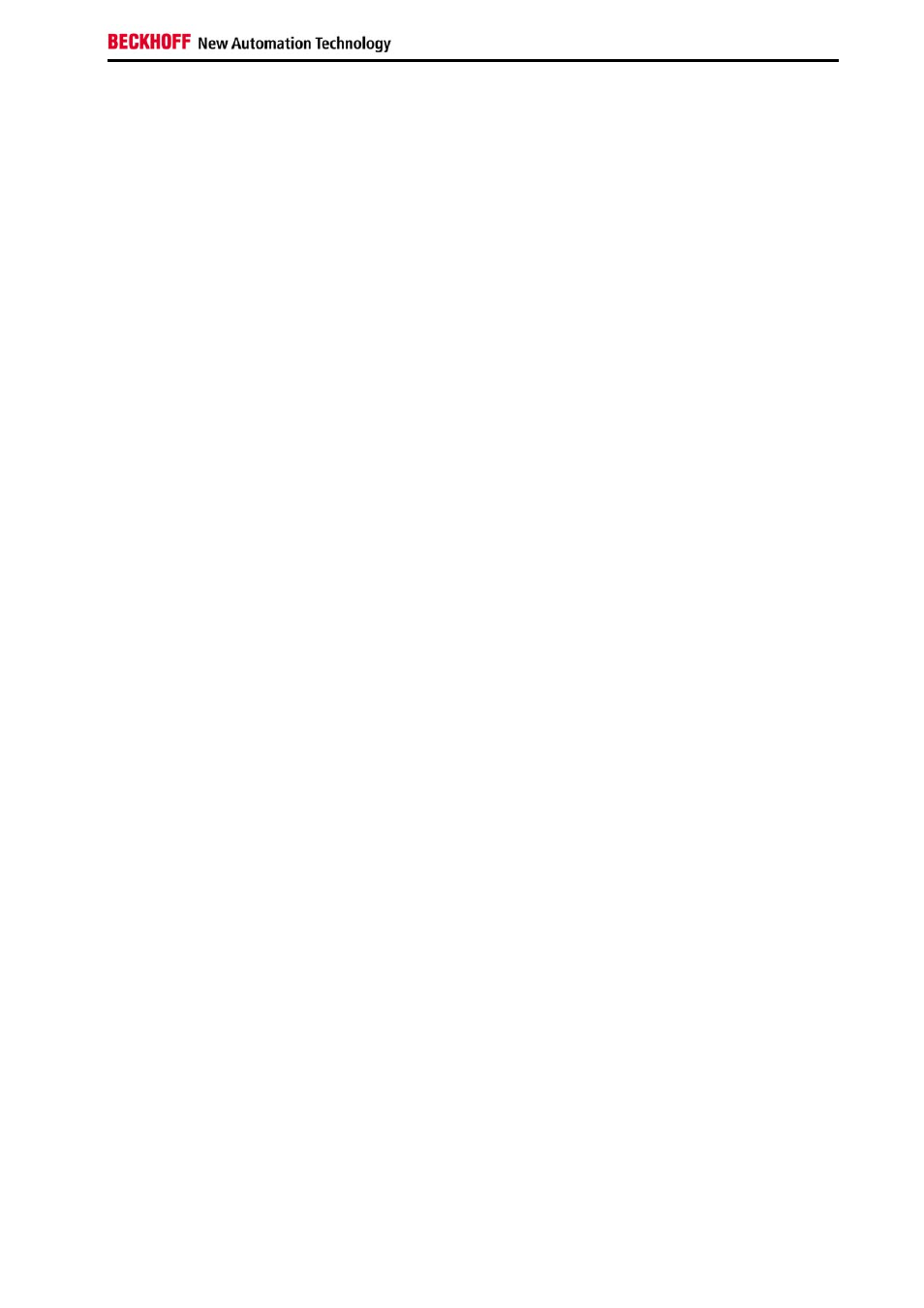Appendix, Technical data, Approvals – BECKHOFF C9900-A172 User Manual
Page 20: Fcc: canadian notice, Appendix 19, Approvals 19, Technical, Data

Appendix
DVI/USB extension C9900-A17x
19
Appendix
Technical data
Dimensions
Dimensions (W x H x D): see section
Operation in areas that are
subject to explosion hazard
The modules must not be used in potentially explosive atmospheres.
The following conditions must be observed during operation:
Environmental conditions
Ambient temperature:
0 to 55°C
Atmospheric humidity:
Maximum 95%, non-condensing
Shock resistance
Sinusoidal vibration:
(EN 60068-2-6)
10 to 58 Hz:
0.035 mm
58 to 500 Hz: 0.5 G (~ 5 m/ s
2
)
Impact:
(EN 60068-2-27/ 29)
5 G (~ 50 m/ s²), duration: 30 ms
Protection class
Modules:
IP20
Power supply
Supply voltage:
The modules have an integrated 24 V
power supply unit.
The PCI bus transmitter plug-in card is
supplied via the Industrial PC.
Power consumption: C9900-A172:
0,4
W
C9900-A173:
2,0
W
EMC compatibility
Resistance to interference: conforms to EN 61000-6-2
Emission of interference: conforms to EN 61000-6-4
Transport and storage
The same values for atmospheric humidity and shock resistance are to be
observed during transport and storage as in operation. The shock
resistance of the modules/transmitter card during transport can be
improved through suitable packaging. The ambient temperature during
storage and transport must be between -20°C and +65°C.
Approvals
FCC: Federal Communications Commission
Radio Frequency Interference Statement
FCC Approval for USA
This equipment has been tested and found to comply with the limits for a
Class A digital device, pursuant to Part 15 of the FCC Rules. These limits
are designed to provide reasonable protection against harmful interference
when the equipment is operated in a commercial environment. This
equipment generates, uses, and can radiate radio frequency energy and, if
not installed and used in accordance with the instruction manual, may
cause harmful interference to radio communications. Operation of this
equipment in a residential area is likely to cause harmful interference in
which case the user will be required to correct the interference at his own
expense.
FCC: Canadian Notice
FCC Approval for Canada
This equipment does not exceed the Class A limits for radiated emissions
as described in the Radio Interference Regulations of the Canadian
Department of Communications.
